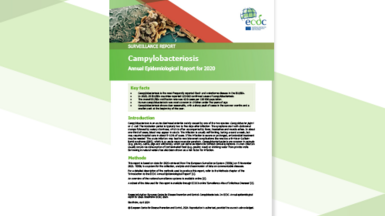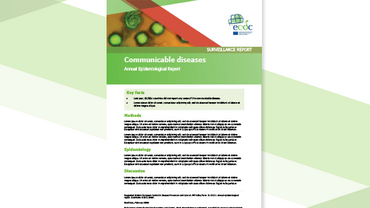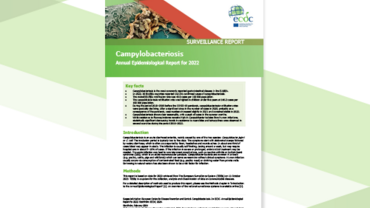Sexually transmitted infections in Europe 2011
This report on sexually transmitted infections (STI) in Europe covers 20 years of surveillance data, with a special focus on 2011. It analyses the basic trends and epidemiological features of the five STI under European Union surveillance: syphilis, congenital syphilis, gonorrhoea, chlamydia and lymphogranuloma venereum.
Erratum. Please note that corrections were made on 22 October 2013. This online version is therefore more up-to-date than the print version.
Executive summary
The report Sexually transmitted infections in Europe 2011 presents EU-wide data on four STI and congenital syphilis from 1990–2011 as reported by countries of the European Union and the European Economic Area (EU/EEA). The data show that young adults and men having sex with men (MSM) are the key groups involved in the transmission of STI in Europe. Young adults particularly contribute to the case numbers of chlamydia, which can partly be explained by targeted chlamydia testing in this age group.
Chlamydia
In 2011, 346 911 cases of chlamydia were reported in 25 EU/EEA Member States, making chlamydia the most frequently reported STI in Europe, accounting for the majority of all reported STI cases. Three quarters (73%) of all chlamydia cases were reported in young people between 15 and 24 years of age.
The age and gender distribution of cases is significantly affected by testing and screening practices in the United Kingdom, which reports 62% of the overall cases and specifically targets young people in its screening programme. In fact, 86% of all cases are reported by just four countries (Denmark, Norway, Sweden and the United Kingdom). Hence, the true incidence of chlamydia in Europe is likely to be considerably higher as differences in testing methods, coverage and surveillance systems across countries mean that many diagnoses are not made or not reported.
Gonorrhoea
Since 2008, the overall rate of reported gonorrhoea cases has increased by 31%, and trends are increasing in most EU/EEA Member States. In 2011, 39 179 gonorrhoea cases were recorded from 28 EU/EEA Member States. A third (33%) of all gonorrhoea cases was reported in men who have sex with men (MSM). Increasing rates appear to be mainly due to increased transmission among men, and among MSM in particular.
Syphilis and congenital syphilis
29 EU/EEA Member States reported 20 004 syphilis cases in 2011, with the majority of cases notified in people older than 25 years. Compared with 2010, the rate of reported syphilis has increased by 9% in 2011. In 2011, 88 cases of congenital syphilis cases were reported from 23 countries. The overall trend in reported cases of congenital syphilis has decreased since 2000 and seems to have stabilised. The effectiveness of national syphilis antenatal screening programmes is being investigated in an ECDC project.
Lymphogranuloma venereum
Sixteen countries reported a total of 697 cases of Lymphogranuloma venereum in 2011. After the increase in reported cases in 2010, the number of cases reported in 2011 remained stable.
Enhanced surveillance of sexually transmitted infections in Europe is essential to provide information necessary to monitor disease distribution and evaluate the public health response to prevent and control the transmission of infections.







